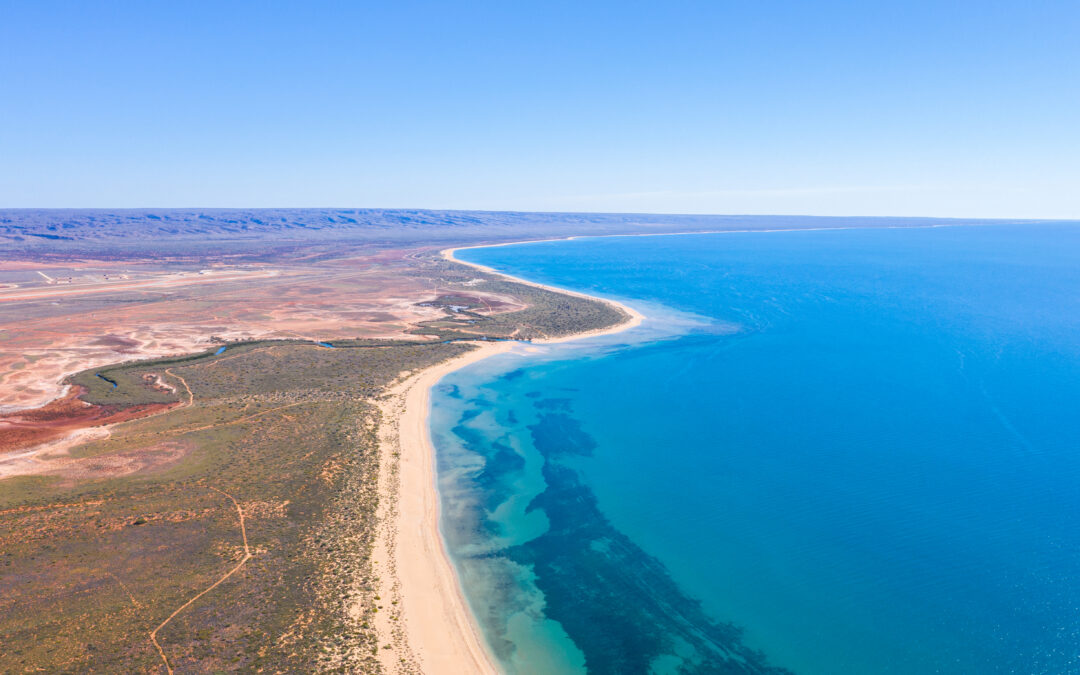MEDIA RELEASE: On the occasion of the tenth anniversary of the Ningaloo Coast being inscribed on the World Heritage list, Protect Ningaloo is today calling on the WA and Federal Governments to trigger the necessary processes to include Exmouth Gulf as part of the Ningaloo National and World Heritage areas.
Protect Ningaloo Director, Paul Gamblin said: “Ningaloo attaining World Heritage status in 2011 was an exciting moment and the culmination of years of advocacy from the community and the efforts of successive federal and state governments. The Ningaloo Coast World Heritage area has been a source of deep pride to so many people in the Ningaloo region, from Exmouth to Carnarvon, and across WA and the country. Today we celebrate how fortunate we are as Australians to be stewards of this inspiring, special place. Now we must finish the job and include Exmouth Gulf, ‘Ningaloo’s nursery’, in the National and World Heritage areas.”
When UNESCO, the body that oversees the listing process, inscribed Ningaloo on the World Heritage list, it recommended in its decision that the Australian Government add Exmouth Gulf to the Ningaloo Coast listing. This built on previous advice from a government-appointed body to also include the Gulf in the World Heritage area. However, opposition to this broader listing, including from some oil and gas interests, blocked Exmouth Gulf from being encompassed within the eventual Ningaloo World Heritage boundaries in 2011.
“This anniversary is also a time to take action on the advice from UNESCO in 2011 for the Australian Government to include Exmouth Gulf in the Ningaloo Coast World Heritage listing. The United Nations, informed by a range of technical experts, recognised how important Exmouth Gulf is to Ningaloo, confirming that it’s a single, interconnected ecosystem. If we genuinely care about Ningaloo, we need to take urgent steps to look after Exmouth Gulf,” said Mr Gamblin.
“We shouldn’t delay any further in recognising Exmouth Gulf’s multiple heritage values. Lack of protection and certainty about Exmouth Gulf’s future has invited a slew of increasingly controversial industrial projects that pose a significant, long-term threat to Exmouth Gulf, its reputation as a world-class tourist destination, and its future as a marine research, land and sea management and education centre of excellence.
“We look forward to working with the State and Federal Governments in the months ahead to make up for lost time and to get moving with long overdue recognition of Exmouth Gulf’s national and world heritage values, and its crucial role in the Ningaloo ecosystem. The local economy and community deserves this certainty.
“Exmouth Gulf is at a crossroads and we owe it to future generations to make decisions on their behalf for the greater good. It’s time for governments to demonstrate their commitment to Ningaloo-Exmouth Gulf.”
Notes to editors: The UNESCO World Heritage Committee, in its official decision to inscribe the Ningaloo Coast on 24 June 2011, also recommended the State Party (i.e. the Australian Government): ‘Consider inclusion of the Exmouth Gulf on the grounds of ecological linkages between the Ningaloo Reef and the gulf, in particular the extensive mangrove stands and other shallow water habitats that function as nurseries and adult foraging grounds for many species’. Decision adopted by the World Heritage Committee at its 35th session (UNESCO, 2011), WHC-11/35.COM/20 (unesco.org) p177
See map showing the Ningaloo Coast World Heritage boundaries, and Exmouth Gulf.
Photos and videos of Ningaloo & Exmouth Gulf wildlife and vistas are available here.

